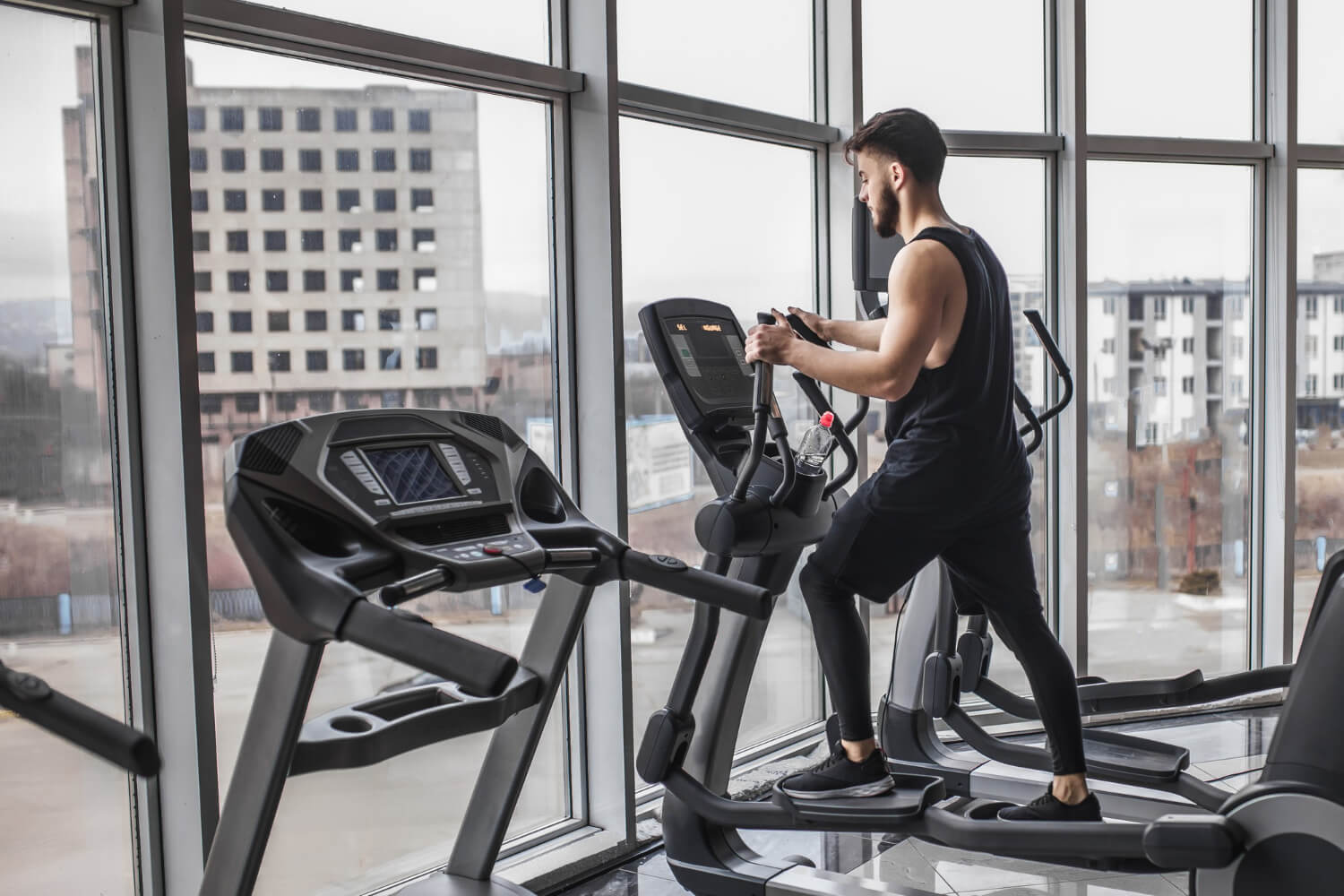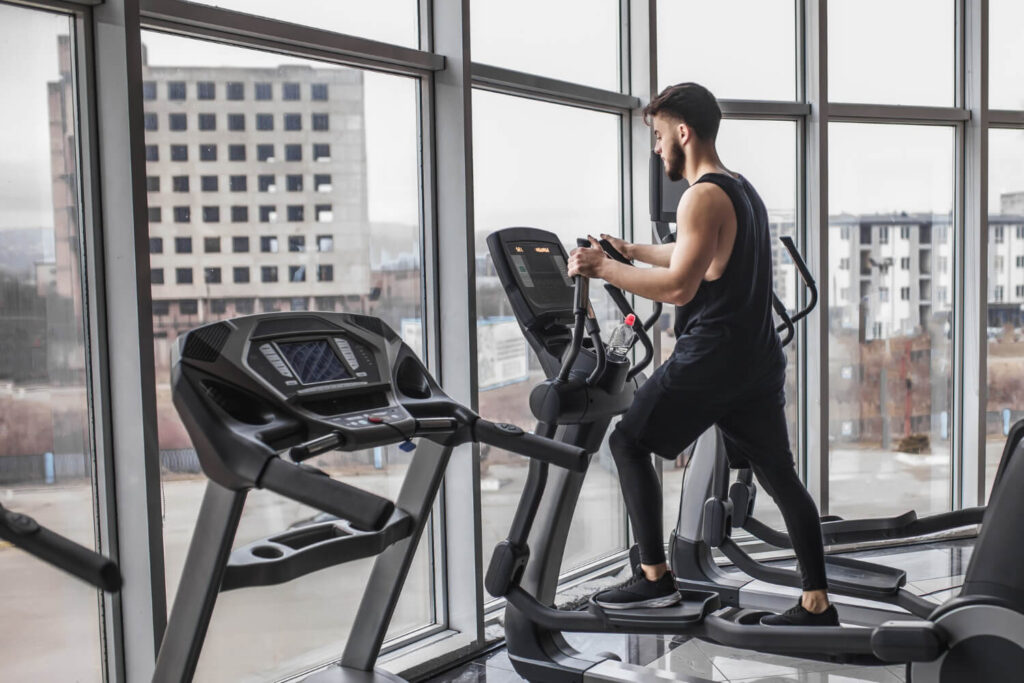Most gym owners running Google Ads are paying for clicks from people who have zero intention of joining. They’re browsing. Comparing prices. Looking for free trials they’ll use once and disappear. The ads bring traffic, but the traffic doesn’t convert into paying members.
We’ve worked with fitness businesses across the US and Australia, and the pattern is consistent. Gyms spend thousands on Google Ads campaigns that generate leads but not memberships. The problem isn’t the platform. It’s how they’re using it. When gyms target “gym near me” or “best gym in Seattle,” they’re competing for the same low-intent searches as every other fitness center in the area. The cost-per-click climbs, and the quality of leads drops.
Here’s what actually works: targeting people at the exact moment they’re ready to commit, not when they’re casually browsing. That means focusing on high-intent keywords, writing ad copy that filters out tire-kickers, and building landing pages that convert serious prospects. Google Ads campaigns succeed when they’re structured around member acquisition, not just traffic generation.
This article breaks down how to stop wasting money on clicks that go nowhere and start attracting people who’ll actually sign up and stick around.
Target High-Intent Keywords, Not Generic Searches
Generic keywords like “gym” or “fitness center” bring volume but terrible conversion rates. Someone searching those terms is at the beginning of their research, not ready to join. They’re comparing options, checking prices, and probably won’t make a decision for weeks.
High-intent keywords signal readiness. “CrossFit gym membership Dallas” or “24-hour gym sign up Brisbane” indicate someone who knows what they want and is ready to commit. We’ve seen gyms cut their cost-per-acquisition by 40-60% just by shifting budget away from broad searches and toward specific, intent-driven queries.
A Melbourne gym was spending $3,000 monthly on Google Ads targeting “gym Melbourne” and similar broad terms. Traffic was high, but conversions were pathetic. Leads came in, but most never responded after the initial inquiry. We rebuilt the campaign around keywords like “personal training gym South Melbourne” and “powerlifting gym membership.” Cost-per-click went up slightly, but lead quality improved dramatically. Membership sign-ups increased from roughly 8 per month to over 20 within two months.
The difference is intent. Broad searches attract browsers. Specific searches attract buyers. When someone types “yoga studio with childcare Perth,” they’re not casually looking. They have a specific need and are ready to solve it. Those are the clicks worth paying for.
Negative keywords matter just as much. If you’re a premium gym, add “cheap,” “free trial,” and “discount” as negatives. If you don’t offer CrossFit, exclude it. If you’re not 24 hours, block those searches. Every irrelevant click costs money and dilutes your campaign data. We regularly see gyms waste 20-30% of their ad budget on searches that were never going to convert. Fix that first.
Location-based intent keywords work exceptionally well for gyms because fitness is inherently local. “Gym near [neighborhood]” or “best gym in [suburb]” combined with your specific offering creates highly targeted campaigns. A Chicago gym focusing on “strength training gym Lincoln Park” saw better results than competing for “gym Chicago.” Smaller audience, but exponentially more qualified.
Write Ad Copy That Filters Out Tire-Kickers
Most gym ads try to appeal to everyone. “Get fit! Join today! First month free!” That approach attracts bargain hunters and people who’ll use the free month and cancel. Your ad copy should repel the wrong people as much as it attracts the right ones.
Be specific about what you offer and who it’s for. “Strength-focused gym for serious lifters” immediately filters casual browsers. “Women’s-only fitness studio with childcare” speaks to a precise audience. “No-contract CrossFit membership” attracts people who hate long-term commitments. Specificity improves conversion rates because the people who click already know what they’re getting.
A Sydney gym we worked with changed their ad copy from “Join the best gym in Sydney” to “Serious strength training for experienced lifters—no cardio machines, no classes.” Click-through rate dropped by 30%, but conversion rate tripled. They were getting fewer clicks, but every person who clicked was a qualified prospect. That’s the goal.
Price transparency in ad copy is controversial, but it works. If you’re premium-priced, say it. “Premium fitness studio—$89/week” scares away bargain hunters and attracts people who value quality. If you’re budget-friendly, lead with that. “No-frills gym—$15/week” sets expectations immediately. The prospects who click already know the price range and are still interested.
Call-to-action matters more than most gym owners realize. “Start your fitness journey” is vague and meaningless. “Book your first session” or “Join this week” creates clarity and urgency. We’ve seen conversion rates improve 15-25% just by changing the CTA from generic inspiration to specific action.
And here’s something most gyms miss: mention your capacity or exclusivity if relevant. “Limited to 200 members” or “Application required” makes your gym feel valuable, not desperate. Scarcity works, but only if it’s real. Don’t manufacture it.
Build Landing Pages That Convert Serious Prospects
Your Google Ads might be perfect, but if they’re sending traffic to your homepage, you’re losing conversions. Homepages are designed for general browsing, not action. Landing pages are built for one thing: getting the visitor to take the next step, whether that’s booking a tour, starting a trial, or signing up.
A good landing page for gym ads needs five elements. First, a headline that matches the ad copy. If your ad promises “strength training for serious lifters,” the landing page better say the same thing immediately. Disconnect between ad and page kills trust and conversions.
Second, clear information about what the prospect gets. Not vague promises like “transform your body.” Specific benefits: access to Olympic lifting platforms, personalized programming, group classes included, childcare available. The prospects clicking your ads want to know exactly what they’re paying for.
Third, social proof that’s actually believable. “500 members love us!” means nothing. “87% of our members stay longer than 12 months” or “Average member has been with us 3+ years” shows retention and satisfaction. Testimonials work if they’re specific: “I’ve tried six gyms in Brisbane and this is the only one I’ve stuck with” beats “Great gym!”
Fourth, a simple, obvious form. Don’t ask for life history. Name, email, phone, preferred time for a tour. That’s it. Every additional field reduces conversions. A Perth gym cut their form from 9 fields to 4 and saw form completions increase by 40%. Make it easy.
Fifth, fast load times. This applies to every page, but landing pages especially. If someone clicks your ad and waits more than three seconds for the page to load, they’re gone. We worked with an Adelaide gym whose landing page took 6.2 seconds to load on mobile. After optimization brought it under 2 seconds, conversion rate improved from 3.1% to 5.8%. Speed matters.
One pattern we’ve noticed across multiple gym clients: video tours on landing pages consistently improve conversions, but only if they’re under 90 seconds and show the actual facility, not stock footage or inspirational montages. Prospects want to see your space, equipment, and vibe before committing to a visit. Give them that.
Mobile optimization isn’t optional. Most gym searches happen on mobile, often when someone is actively looking for a place to work out that day or week. If your landing page doesn’t work perfectly on mobile, you’re losing the highest-intent traffic. Test it yourself: pull up your landing page on your phone. Can you read everything easily? Is the form simple to fill out? Does it load fast? If not, fix it before spending another dollar on ads.
Track the Right Metrics or You'll Optimize for Nothing
Most gym owners look at the wrong data. They celebrate clicks and traffic without connecting it to actual memberships. Clicks don’t pay your rent. Members do.
The metrics that matter: cost per lead, lead-to-tour conversion rate, tour-to-membership conversion rate, and cost per acquisition. If you’re spending $2,000 on ads, generating 50 leads, getting 15 tours, and closing 5 memberships, your cost per acquisition is $400. That’s the number that tells you if your campaign is working.
Compare that to lifetime member value. If your average member stays 18 months at $60/week, that’s roughly $4,600 in revenue. A $400 acquisition cost is sustainable. A $1,200 acquisition cost probably isn’t, unless you’re a premium facility with higher rates and longer retention.
We’ve worked with gyms that thought their Google Ads were performing well because they were getting leads. Then we tracked those leads through to membership sign-ups and realized 90% never converted. The ads were generating activity, not revenue. Once we rebuilt campaigns around high-intent keywords and better landing pages, lead volume dropped by 30%, but membership conversions increased by 150%. Revenue went up while ad spend stayed flat.
Call tracking is mandatory. If your ads include a phone number, you need to know which calls came from which campaigns. A Brisbane gym discovered that 60% of their phone leads came from one specific ad group targeting “CrossFit gym Brisbane CBD.” They reallocated budget accordingly and saw membership growth accelerate. Without call tracking, they would never have known.
Attribution gets messy with gyms because the buying cycle isn’t instant. Someone might click your ad, visit your site, think about it for a week, then call or show up. Google’s default attribution model credits the last click, which might be a branded search, not the original ad that introduced them to your gym. Use data-driven attribution if your account has enough conversions, or at least understand that first-click and last-click tell different stories.
The biggest mistake gyms make with tracking is not connecting ad data to their CRM or membership management software. You need to know which campaigns are generating members who actually stick around. If one campaign brings in 20 sign-ups but 18 cancel within three months, that’s not a successful campaign even if the initial cost per acquisition looked good. Retention data matters as much as acquisition data.
Don't Compete on Price, Compete on Fit
Price-focused Google Ads campaigns attract price-focused members. Those members leave the moment they find something cheaper or get a better introductory offer elsewhere. If your entire ad strategy is built around discounts and promotions, you’re building a membership base with zero loyalty.
Compete on fit instead. A Dallas gym targeting “Olympic weightlifting gym” doesn’t need to be the cheapest option. They need to be the best option for people who care about Olympic lifting. Those prospects will pay more for specialized equipment, knowledgeable coaches, and a community of serious lifters. Competing on specialization beats competing on price every time.
This works across different gym models. Boutique studios, CrossFit gyms, women’s-only facilities, 24-hour access gyms, powerlifting-focused spaces—each has a specific audience willing to pay for what they uniquely offer. Your gym and fitness studio marketing should emphasize what makes you different, not what makes you cheapest.
A Melbourne yoga studio stopped running “first month free” promotions and started targeting “hot yoga Fitzroy” and “vinyasa yoga studio Melbourne.” Their cost per lead increased, but member retention improved dramatically. The people joining weren’t looking for a deal. They wanted a specific type of yoga in a specific area, and they were willing to pay for it.
Look, if you’re a budget gym, own it. But even then, compete on value, not just price. “$15/week, no lock-in contract, open 24/7” positions you as affordable and flexible, which is a value proposition. “$15/week” alone just says you’re cheap.
The gyms that succeed with Google Ads are the ones that know exactly who they’re for and aren’t afraid to say it clearly. Trying to appeal to everyone means you’re not compelling to anyone. Pick your niche, speak directly to that audience, and structure your campaigns accordingly.
Key Takeaways
- Generic keywords attract browsers while high-intent searches bring people ready to join and commit
- Ad copy should filter out bargain hunters by being specific about offerings and ideal members
- Landing pages must match ad messaging exactly with clear benefits and simple conversion forms
- Track cost per actual membership signup, not just clicks or leads, to measure real ROI
- Competing on specialization and fit attracts loyal members who stay longer than discount seekers
Final Thoughts
After working with dozens of fitness businesses over the past several years, here’s what separates gyms that succeed with Google Ads from those that burn money: they know exactly who they want as members and aren’t afraid to exclude everyone else.
The gyms that win aren’t trying to be everything to everyone. They’re laser-focused on their ideal member, from keyword selection to ad copy to landing page design. A mediocre Google Ads campaign targeting the right people beats a technically perfect campaign targeting the wrong ones every time.
That’s how sustainable member growth happens. If your Google Ads are bringing traffic but not memberships, we can help you fix what’s broken.
Common Questions
How much should a gym spend on Google Ads monthly?
Start with $1,500-$3,000 monthly to gather meaningful data. Smaller budgets won’t generate enough conversions to optimize effectively. Scale up once you’ve proven your cost per acquisition is sustainable against member lifetime value.
What's a good conversion rate for gym landing pages?
We typically see 3-7% for cold traffic from Google Ads. If you’re below 3%, your landing page needs work. Above 7% is exceptional and usually indicates highly targeted campaigns with strong ad-to-page message match.
Should gyms use Google Ads or Facebook Ads?
Google Ads captures existing demand—people actively searching for a gym. Facebook Ads creates demand through targeting. For most gyms, Google Ads converts better because the intent is higher. Facebook works for awareness and retargeting.
How long does it take to see results from Google Ads?
Expect 60-90 days to gather enough data for meaningful optimization. You’ll see clicks and leads immediately, but understanding which campaigns drive actual memberships takes time. Don’t judge performance in the first 30 days.
Do free trial offers work in Google Ads for gyms?
They generate leads but often attract people who won’t convert to paying members. Free trials work better for retargeting people who’ve already visited your site. For cold traffic, paid trial periods like “$1 for first week” filter better and improve member quality.




